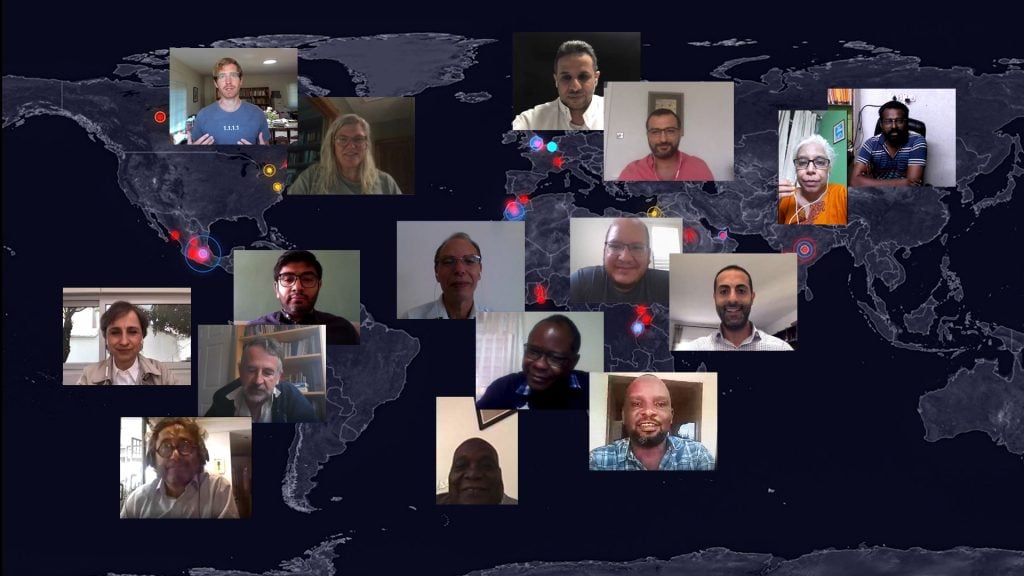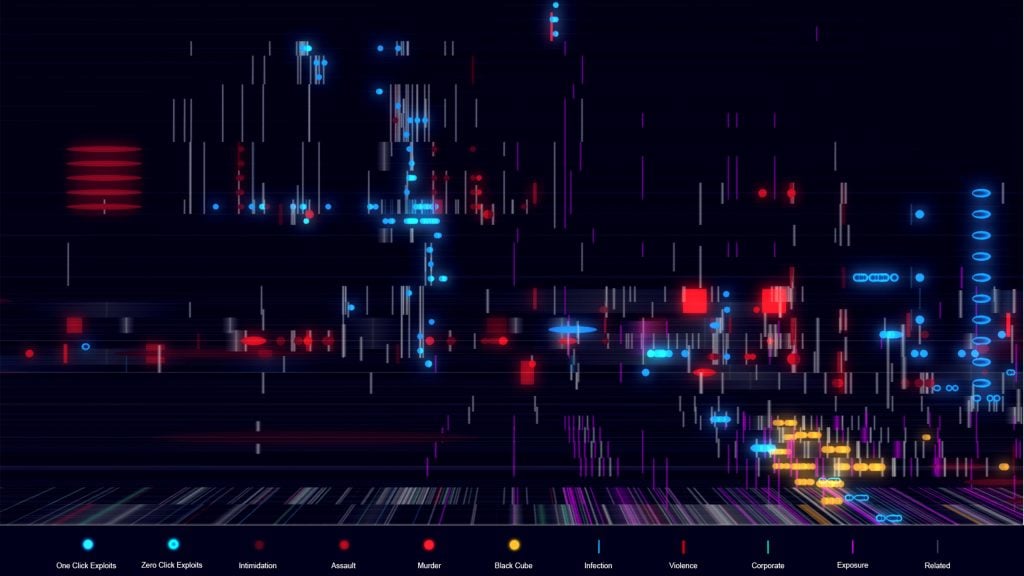Crime
Art Collective Forensic Architecture Has Teamed Up With Edward Snowden to Investigate a Shadowy Global Spyware Company
The collective believes that "digital violence" is the most important unexamined human rights violation of our time.

The collective believes that "digital violence" is the most important unexamined human rights violation of our time.

Taylor Dafoe

Three years ago, Yana Peel abruptly resigned as director of the Serpentine Galleries in London after reports connected her—vis-à-vis her husband’s private equity firm—to NSO Group, a controversial Israeli cybersecurity company known for its flagship spyware that allows users to hack unsuspecting cell phones. Those who have raised alarm about the group describe it as analogous to gun manufacturers prior to U.S. firearm regulations: a weapons merchant operating indiscriminately within a legal system ill-equipped to control it.
Peel’s relationship to the company, it turned out, was tenuous. (She owns an indirect and passive interest in Novalpina, the investment fund that acquired the NSO Group in 2019, but has had no involvement with the Israeli company.) The Guardian—one of the first publications to report on the director’s alleged involvement—issued a rare retraction saying as much.
And yet Peel’s resignation from the Serpentine represented an important milestone in the 11-year history of the Israeli company, according to Eyal Weizman, founding director of the investigative art collective Forensic Architecture: it marked the first moment of “accountability to any actions related to the NSO Group.”
If Weizman and his group have their way, this instance of accountability likely won’t be the last. This month, Forensic Architecture unveiled its newest project: an interactive platform that charts thousands of instances of so-called “digital violence” tied to the NSO Group—as well as the events, private interests, and other forces that have empowered the company along the way.
It’s part art, part legal resource—one that, like other Forensic Architecture projects, may well be employed as evidence in a courtroom one day. The Turner Prize-nominated research lab has previously trained its eyes on subjects ranging from Russian military activity in Ukraine and U.S. drone strikes in Pakistan. The new project is the most comprehensive database ever assembled dedicated to what’s been called the “world’s most notorious surveillance company.”
Rounding out the artsier features of Digital Violence, as the platform is titled, are video investigations narrated by Edward Snowden; interviews with activists, journalists, and lawyers worldwide who have been the subject of targeted hacks; and a sound piece composed by Brian Eno. Laura Poitras, the Academy Award-winning director of Citizenfour, the documentary about Snowden, has also made a short film about the project, which is set to debut at Cannes Film Festival this month.

Courtesy of Forensic Architecture.
A missed call or a strange text: these are perhaps the only signs that your phone has been infected by Pegasus, the name of the NSO Group’s signature software, according to Forensic Architecture’s lead researcher Shourideh Molavi. After that, the users on the other end have access to virtually everything on your device—your calls and texts; your passwords and GPS information; your network of friends, family, and colleagues. They can even tap into your camera and microphone, enabling real-time surveillance. This is what Forensic Architecture’s members have dubbed “digital violence.”
“We’re used to examining missiles, tanks, bullets,” Molavi told Artnet News. “Now, we’re dealing with a kind of state violence that you cannot see, that is difficult to detect…that doesn’t require any agency from the user, and that’s privately funded and sold by a private company. All of these things make for a dangerous package of human rights violations.”
Often, physical violence isn’t far away. What Forensic Architecture’s platform makes clear is that instances of Pegasus-related digital violence are often accompanied by real-world attacks, be it in the form of break-ins, lawsuits, or arrests. In interviews, hacking victims recall the psychological and emotional toll of being infected: they become anxious, have trouble sleeping, and feel like they’re constantly being watched.
“It’s hard for people to understand how a hack can have physical consequences,” Molavi said. “It’s just your phone, right? But really, it’s your relationships, it’s your family, it’s your feeling of security, it’s your mental health.”
There’s another crucial consideration, too: digital violence transcends geopolitical boundaries. Whereas states can’t exercise judicial power outside the limits of their respective territories, Pegasus gives its users the power to terrorize almost anyone, anywhere, according to numerous reports on the product.
"The investigation of not just the NSO Group, but this sector and this technology, is the most important unwritten story in media today." —Edward @Snowden speaking at the project launch at @HKW_Berlin last Sat. Watch a recording of the live event in full: https://t.co/HfVFO6Qjob pic.twitter.com/KmS2vzHJvq
— Forensic Architecture (@ForensicArchi) July 6, 2021
Despite challenges in court, Israel’s Ministry of Defense continues to grant the NSO Group export licenses; and the company’s corporate structure has allowed it to put its signature product in markets in Saudi Arabia, the United Arab Emirates, and even the United States. NSO has yet to confirm any of its clients, but according to a report from Citizen Lab, Pegasus has been used in at least 45 countries worldwide since 2015.
Representatives from the NSO Group did not immediately respond to Artnet News’s request for comment, but in a statement to the Washington Post, a spokesperson for the company dismissed Forensic Architecture’s platform.
“These are recycled claims, filled with inaccuracies and half-truths,” the spokesperson said. The company “investigates all credible claims of misuse, and takes appropriate action based on the results of its investigations. This includes shutting down a customer’s system—a step NSO has taken several times in the past, and will not hesitate to take again if a situation warrants.”
For Forensic Architecture and its allies, Digital Violence aims to do what international judicial organizations, traditional press outlets, and other authorities won’t—or can’t.
During a recent event to inaugurate the platform at Haus der Kulturen der Welt (HKW) in Berlin, where Forensic Architecture is currently included in an exhibition on open-source investigation, Edward Snowden said: “The investigation of not just the NSO group, but this sector and this technology, is the most important unwritten story in media today.”